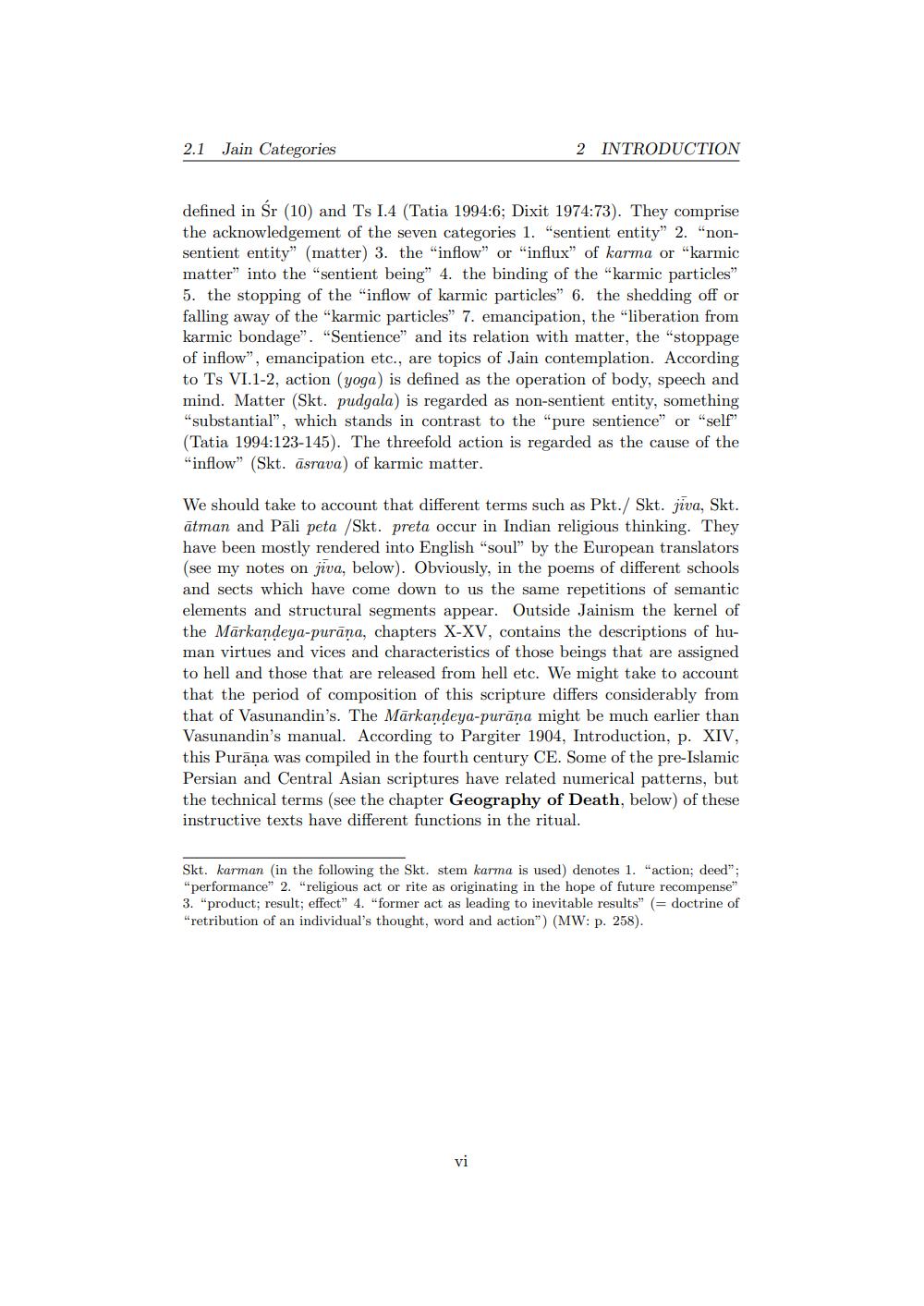Book Title: Shravakachar of Vasunandini Author(s): Signe Kirde Publisher: Signe Kirde View full book textPage 8
________________ 2.1 Jain Categories 2 INTRODUCTION defined in Sr (10) and Ts 1.4 (Tatia 1994:6; Dixit 1974:73). They comprise the acknowledgement of the seven categories 1. "sentient entity" 2. "nonsentient entity" (matter) 3. the "inflow" or "influx" of karma or "karmic matter" into the "sentient being" 4. the binding of the "karmic particles 5. the stopping of the "inflow of karmic particles" 6. the shedding off or falling away of the "karmic particles" 7. emancipation, the "liberation from karmic bondage". "Sentience" and its relation with matter, the "stoppage of inflow", emancipation etc., are topics of Jain contemplation. According to Ts VI.1-2, action (yoga) is defined as the operation of body, speech and mind. Matter (Skt. pudgala) is regarded as non-sentient entity, something "substantial", which stands in contrast to the "pure sentience" or "self (Tatia 1994:123-145). The threefold action is regarded as the cause of the "inflow" (Skt. asrava) of karmic matter. We should take to account that different terms such as Pkt./ Skt. jiva, Skt. ātman and Pāli peta /Skt. preta occur in Indian religious thinking. They have been mostly rendered into English "soul" by the European translators (see my notes on jiva, below). Obviously, in the poems of different schools and sects which have come down to us the same repetitions of semantic elements and structural segments appear. Outside Jainism the kernel of the Mārkandeya-purana, chapters X-XV, contains the descriptions of human virtues and vices and characteristics of those beings that are assigned to hell and those that are released from hell etc. We might take to account that the period of composition of this scripture differs considerably from that of Vasunandin's. The Markandeya-purāņa might be much earlier than Vasunandin's manual. According to Pargiter 1904, Introduction, p. XIV, this Purāņa was compiled in the fourth century CE. Some of the pre-Islamic Persian and Central Asian scriptures have related numerical patterns, but the technical terms (see the chapter Geography of Death, below) of these instructive texts have different functions in the ritual. Skt. karman in the following the Skt. stem karma is used) denotes 1. "action; deed”; "performance" 2. "religious act or rite as originating in the hope of future recompense" 3. "product; result; effect" 4. "former act as leading to inevitable results" (= doctrine of "retribution of an individual's thought, word and action") (MW: p. 258).Page Navigation
1 ... 6 7 8 9 10 11 12 13 14 15 16 17 18 19 20 21 22 23 24 25 26 27 28 29 30 31 32 33 34 35 36 37 38 39 40 41 42 43 44 45 46 47 48 49 50 51 52 53 54 55 56 57 58 59 60 61 62 63 64 65 66 67 68 69 70 71 72 73 74 75 76 77 78 79 80 81 82 ... 187
